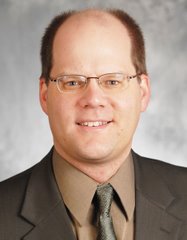Department of Health, North Oaks & Vinyl Chloride
On Tuesday, August 26th, Senator Rummel and I as well as several other legislators attended a legislative briefing by the Minnesota Department of Health (MDH). Every four years, the MDH goes through a rulemaking process to update "health risk limits" (or HRLs-pronounced "hurls") for chemicals commonly found in polluted groundwater. One of the chemicals that MDH has been re-evaluating is vinyl chloride. Vinyl chloride is a chemical that has shown up in drinking water wells in North Oaks. The source is the closed Highway 96 landfill in White Bear Township.
In 2004, the MDH set the created a DRAFT HRL at 0.08 parts per billion (ppb), or 0.08 micrograms per liter. That meant that any well that had a concentration of vinyl chloride greater than 0.08 ppb would could be "red-tagged" as contaminated, leading to a variety of possible actions to resolve the issue, such as digging a deeper well, putting the home on municipal water supply, or treating the water. If a polluter could be identified and held liable, that polluter would usually be made to pay for the remediation by the MN Pollution Control Agency. Several wells in North Oaks were right at 0.08 ppb during the last few years. I need to point out that this draft HRL of 0.08 did not go into effect.
This year, after reviewing new data, the MDH is proposing a HRL for vinyl chloride at 0.2 ppb, which is less restrictive than the draft 0.08 ppb. My goal at the meeting on the 26th was to figure out why the standard is to be less restrictive. Had someone meddled with the data? Had the polluters convinced the agency to weaken the standard to avoid paying for pollution they had caused? Or was there some other reason? (I'm not a conspiracy theorist so I just offer those questions as possible ways to look at the situation.)
After much discussion, someone at MDH finally made a statement that made sense to me. Back in 2004, the MDH did not have conclusive data in their risk assessment process to determine what the real HRL was. With a lack of data, they chose to be more conservative in setting a "draft" HRL of 0.08 ppb until they could get some more data. What they said at the meeting is that they have the data now that they need to do an accurate risk assessment, and the assessment resulted in maintaining the existing HRL of 0.2 ppb.
The previous Health Commissioner got in hot water last year for withholding data about mesothelioma deaths in miners in Northern Minnesota, so the MDH seems to be bending over backwards to "show the math" of their work. So you can see just how MDH derived their new HRL on their web site. In fact there is so much information that it takes a while to get through it all.
If you have a well with vinyl chloride in it that is less concentrated than the new HRL, it probably doesn't make you feel much better. So I wanted to make sure interested readers know about public meetings coming up this fall where you can comment on the changes.
Public Meetings: The MDH will have a public availability session on September 15th from 9:00 a.m. to 11:00 a.m. where the public can meet with staff on how these HRLs were determined. Having a meeting during the daytime is not particularly convenient for homeowners so I am going to request that they have some evening availability.
Other important dates: The MDH will print a notice of the proposed rule changes in the State Register on September 2nd. There will be a hearing in front of a Administrative Law Judge (ALJ) on October 10th, followed by a comment/rebuttal period, a report by the ALJ to the Health Commissioner, and the Governor's approval.
Remaining issues: Vinyl chloride was one of several dozen chemicals whose HRLs are being updated. After this rulemaking process this fall, the MDH will be looking at 40-50 chemicals. There was concern expressed by one House committee chair at the meeting that the MDH needs to be reviewing a lot more chemicals every four years, and that inevitably leads to a question of resources, priorities, etc.
